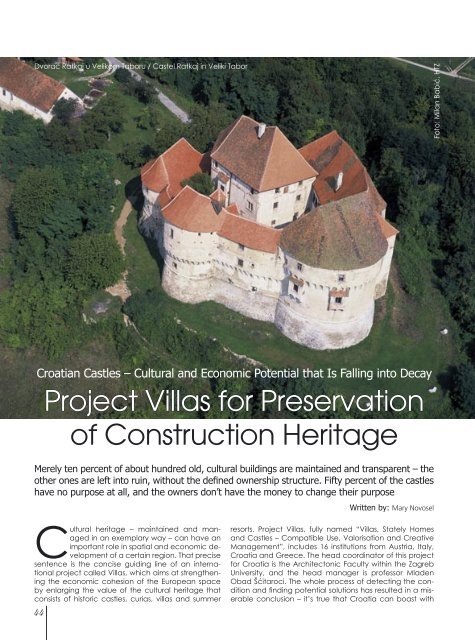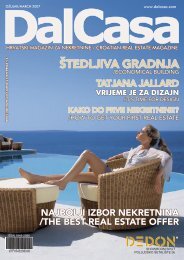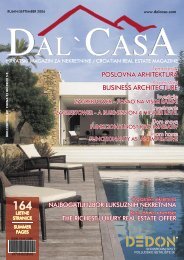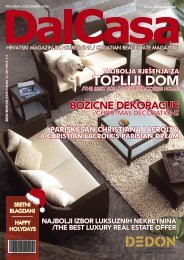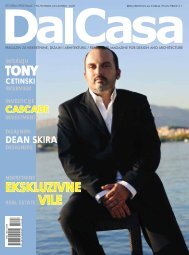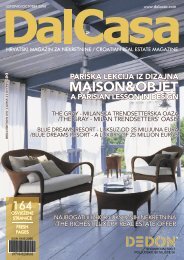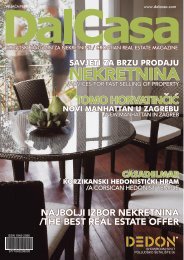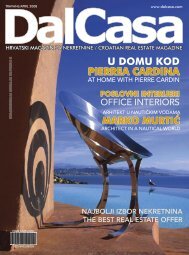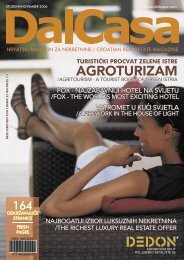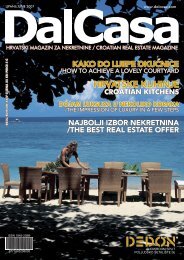100% DESIGN LONDON - DalCasa
100% DESIGN LONDON - DalCasa
100% DESIGN LONDON - DalCasa
You also want an ePaper? Increase the reach of your titles
YUMPU automatically turns print PDFs into web optimized ePapers that Google loves.
Dvorac Ratkaj u Velikom Taboru / Castel Ratkaj in Veliki Tabor<br />
Foto: Milan Babić, HTZ<br />
Croatian Castles – Cultural and Economic Potential that Is Falling into Decay<br />
Project Villas for Preservation<br />
of Construction Heritage<br />
Merely ten percent of about hundred old, cultural buildings are maintained and transparent – the<br />
other ones are left into ruin, without the defined ownership structure. Fifty percent of the castles<br />
have no purpose at all, and the owners don’t have the money to change their purpose<br />
Written by: Mary Novosel<br />
Cultural heritage – maintained and managed<br />
in an exemplary way – can have an<br />
important role in spatial and economic development<br />
of a certain region. That precise<br />
sentence is the concise guiding line of an international<br />
project called Villas, which aims at strengthening<br />
the economic cohesion of the European space<br />
by enlarging the value of the cultural heritage that<br />
consists of historic castles, curias, villas and summer<br />
44<br />
resorts. Project Villas, fully named “Villas, Stately Homes<br />
and Castles – Compatible Use, Valorisation and Creative<br />
Management”, includes 16 institutions from Austria, Italy,<br />
Croatia and Greece. The head coordinator of this project<br />
for Croatia is the Architectonic Faculty within the Zagreb<br />
University, and the head manager is professor Mladen<br />
Obad Šćitaroci. The whole process of detecting the condition<br />
and finding potential solutions has resulted in a miserable<br />
conclusion – it’s true that Croatia can boast with


